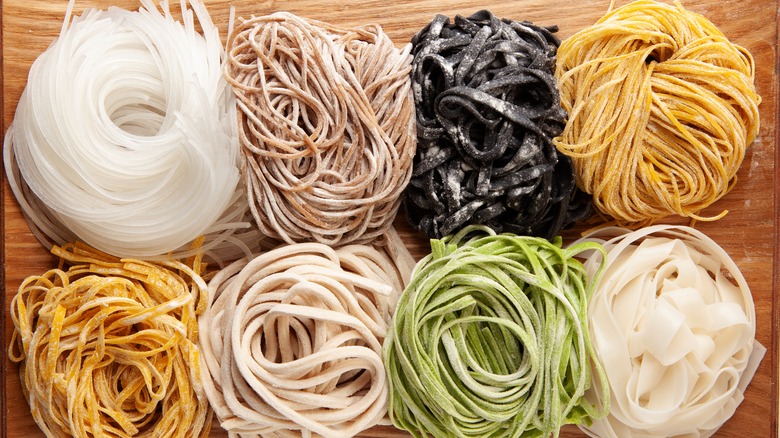In Japan, soba noodles can be found in a variety of settings, from “fast food” places to expensive specialty restaurants. Markets sell dried noodles and men-tsuyu, or instant noodle broth, to make home buckwheat flour noodles easy. The tradition of eating soba arose in the Edo period.
The tradition of eating soba originates from the Tokugawa period, also called the Edo period, from 1603 to 1868. In the Tokugawa period, every neighborhood had one or two soba establishments, many also serving sake, which functioned much like modern cafes where locals would stop for a casual meal. The delivery of food called demae was originally a service for wealthy daimyō in the 1700s. Until the late Showa period, piles of soba bowls were packed on the shoulders of bicycle couriers. Some establishments, especially cheaper and more casual ones, may serve both soba and udon as they are often served in a similar manner.

Soba is the traditional noodle of choice for Tokyoites. Soba is typically eaten with chopsticks, and in Japan, it is considered acceptable to slurp the noodles noisily. This is especially common with hot noodles, as drawing up the noodles quickly into the mouth helps cool them. However, quiet consumption of noodles is no longer uncommon. Like many Japanese noodles, soba noodles are often served drained and chilled in the summer, and hot in the winter with a soy-based dashi broth. Extra toppings can be added to both hot and cold soba.
Toppings are chosen to reflect the seasons and to balance with other ingredients. Most toppings are added without much cooking, although some are deep-fried. Most of these dishes may also be prepared with udon. Chilled soba is often served on a sieve-like bamboo tray called a zaru, sometimes garnished with bits of dried nori seaweed, with a dipping sauce known as soba tsuyu on the side. Cold soba served on its own. Cold soba served with various toppings sprinkled on top, after which the broth is poured on by the diner.
